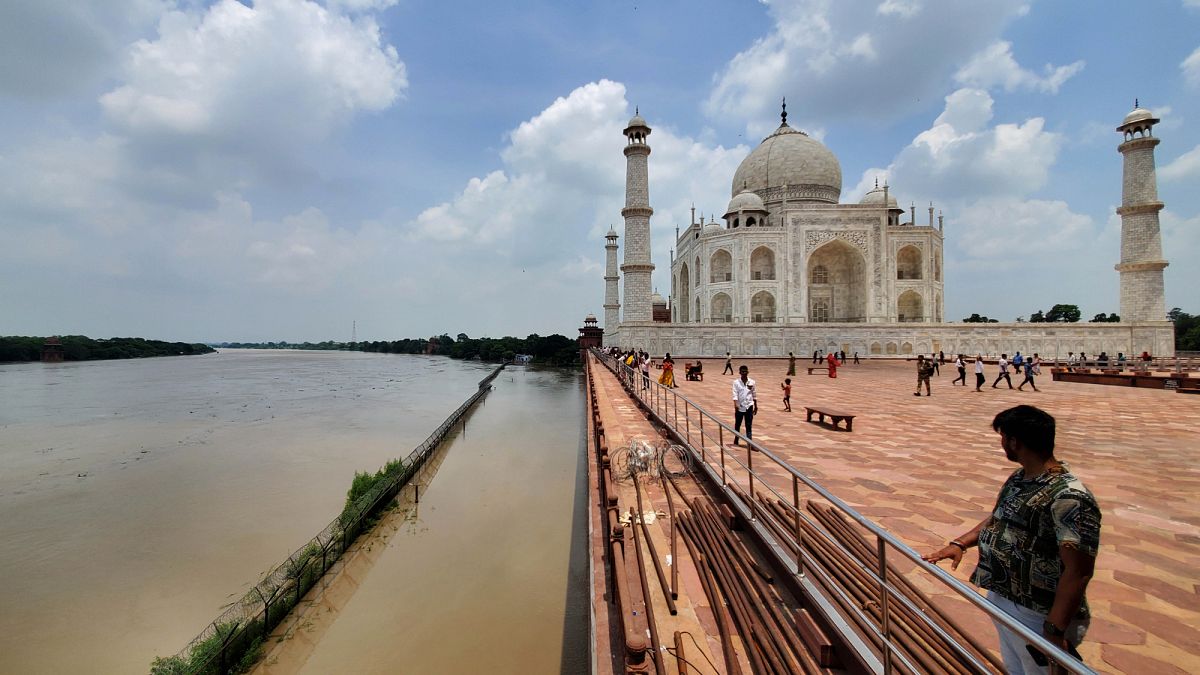Nearly 73 per cent of World Heritage sites are at high risk of water-related hazards, according to analysis by the World Resources Institute (WRI) and UNESCO.
From the Taj Mahal to the Royal Monastery of Santa MarIa de Guadalupe, more than 1,100 inscribed sites were assessed for four types of water risk: drought, water stress, riverine flooding and coastal flooding.
Using the WRI’s Aqueduct platform, the sites were then categorised by severity, with some facing dual, overlapping issues.
“We found that 21 per cent of the sites faced both a water scarcity challenge, whether that was water stress or drought, as well as a flooding challenge, whether that was riverine and coastal,” Samantha Kuzma, Aqueduct Data Lead at the WRI, tells Euronews Culture. “[This] makes it really difficult to manage the water resources around [the sites] when they’re dealing with both extremes.”
These water risks are most prevalent in so-called hotspots, where changes to the water cycle, or an increase in human demand, can combine to create extreme environmental challenges.
Within the European Union alone, 65 per cent of sites are facing at least one severe water risk, with hotspots predominantly in the Mediterranean – especially Spain and Greece. One notable example is the Acropolis of Athens, which has struggled with both flooding and extreme heat in recent years – the latter of which forced temporary closures last year.
“[The Site] is suffering from a multitude of different environmental related challenges that are now starting to limit the ability of tourists visiting that Site,” says Kuzma. “And if tourism is affected, then all of the economies that are supported by tourism around those sites are impacted, and the community that depends on that is impacted. So there are these real, tangible impacts that we can see when one of these sites is affected.”
To combat this, the Acropolis implemented a new drainage system to prevent further flooding, which has so far proven successful. For other sites, however, solutions remain difficult due to a lack of resources and preparedness – but mostly cost. The Museum of Making, which is housed in a UNESCO inscribed Silk Mill in Derby, UK, reportedly spent six-figures on repairs following severe flood damage back in 2023.
In their report, the WRI recommends nature-based solutions, such as revitalising wetlands to capture flood waters; enacting national conservation policies to protect against industrial developments; and an elevation of water’s status as a global common good.
“I think to adequately protect not only these sites, but also the communities that surround them, we have to think bigger,” explains Kuzma. “It’s thinking about how we can work within these watersheds (an area of land where water drains into a water body like a river or lake) to enact solutions and have healthier, more resilient watersheds.”
The 47th session of the UNESCO World Heritage Committee began in Paris on Sunday, during which representatives from 21 of the States Parties to the Convention will review reports on the conservation of its inscribed properties, along with new nominations.
The global share of World Heritage sites exposed to high-to-extremely high levels of water hazards is expected to rise from 40 to 44 per cent by 2050, but Samantha hopes our human connection to these prestigious places will continue to drive collective solutions driven by ingenuity and passion.
“These sites really represent our connection to nature and to culture; they help us have that emotional connection to the areas around us,” she says. “And if we can use that emotion and that connection to feel inspired, then I think that can help us push further towards scaling the types of solutions that we see.”

